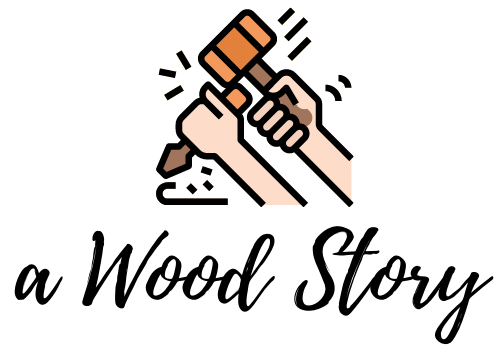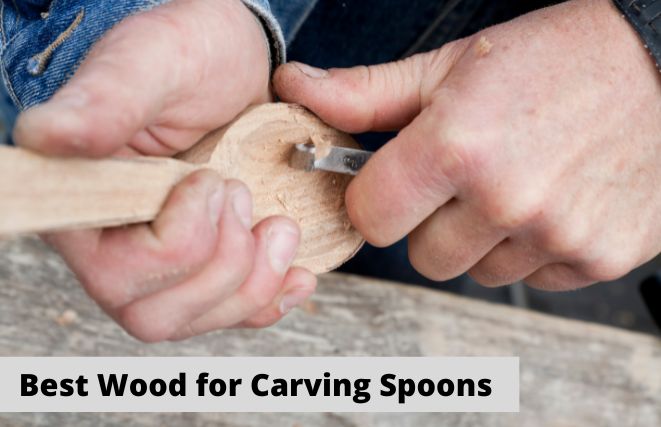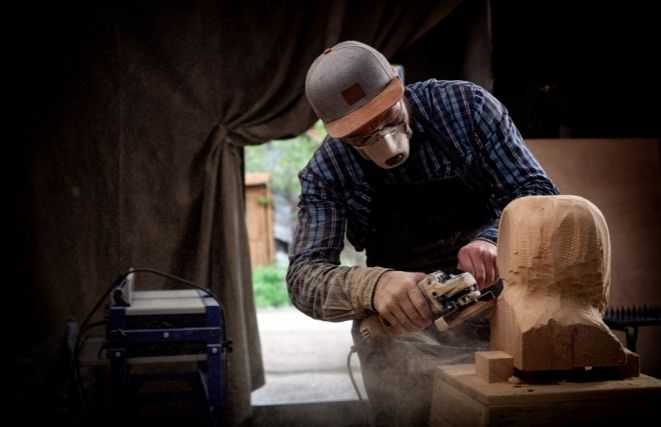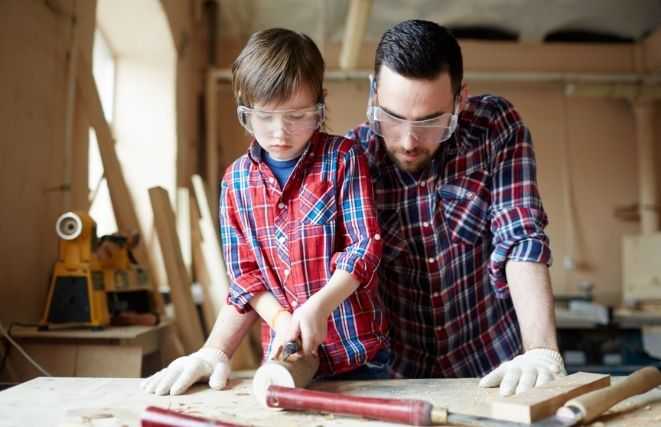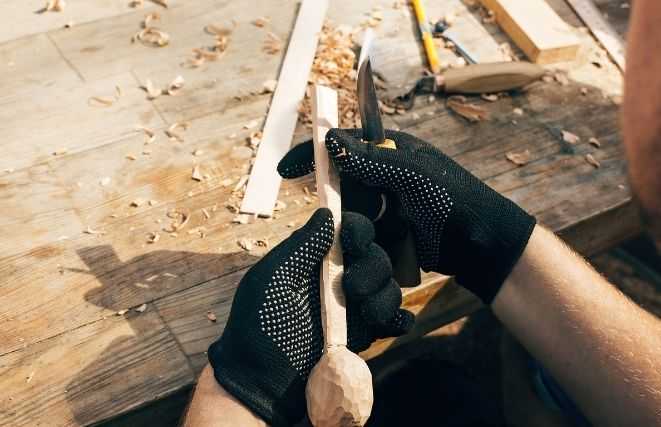Carving softwood is always pleasant, and it’s often easier if you’re just starting out. Though basswood and cedar are the most well-known options, others could be better.
Balsa wood (Ochroma pyramidale) is the softest wood for carving and can resist forces of just 400 Newtons.
However, soft wood for carving doesn’t necessarily mean the best. Most of them could have shorter lifespans, cracks, and fluff inside. Today, you can learn what you must know to find the best of the softest woods for carving
Table of Contents
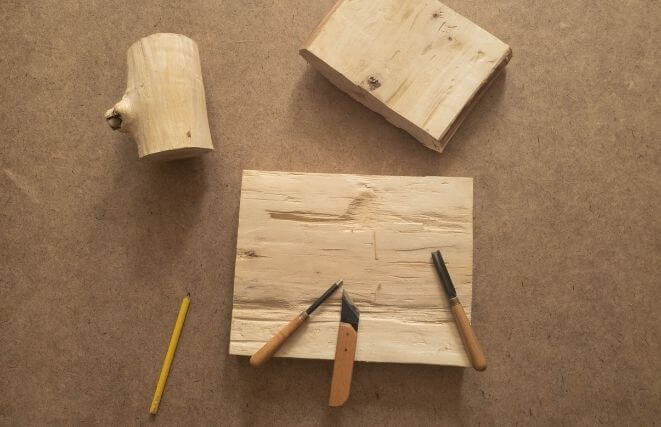
Top 5 Options for Soft Wood Carving
While balsa is the softest wood out there, it might not necessarily be the best. Softwoods can have different durabilities, colors, prices, smells, grain, availability, and more. Here are the top 5 softwood for carving options on the market:
Balsa
The most favorite soft wood for carving is balsa wood. This wood offers many unique features and is perfect for beginners.
Typically, balsa carvings are lightweight, so they stand apart from the crowd when you pick them up. They also tend to have a pale white color, making them distinguishable from other woods, even if they’re similar in stature.
In many cases, balsa wood doesn’t require a carving knife to cut into it. However, you should always use the sharpest knives possible for safety. In general, though, a butter knife could be enough for a small carving in balsa wood.
Check the latest price on Amazon
One caveat here is that balsa wood is fragile, so if you hold it firmly, you could break it. With that, it’s more expensive than basswood. It may also be harder to find it from a wood supplier, so you may have to go online or to a local hobby store, which could raise prices even more.
Still, if you’ve never used balsa wood, you should. It offers a unique feeling when you hold it because it almost feels hollow
Cedar
There are various kinds of cedar out there, and they all feature a similar density, ranging from 1300 to 1600 Newtons. Though that can seem like a large difference, it’s still one of the softest woods for carving and is easy to use.
Typically, the colors include yellow, white, and red cedar. Yellow is a favorite of many woodworkers because it smells good.
If your goal is a soft wood for carving, cedar is a great choice, though it comes at a higher price. It’s not excessively expensive when compared to other softwoods, but it is much more than basswood.
Check the latest price on Amazon
As with other soft wood for carving, you should remember that water doesn’t mix well with cedar. Though it’s waterproof compared to others of the same density, it must be sealed and varnished to avoid damaging the wood.
Ultimately, this is a go-to option with tons of variety. With that, it’s easy to carve but might be a bit expensive.
Paulownia (Kiri)
Paulownia isn’t very popular, but it is a soft wood for carving and is second only to balsa. Therefore, you might be interested in trying it.
What you notice immediately about paulownia is that it has a contrast in the grain, which is quite unusual. You probably haven’t seen very many carvings with this wood, as it isn’t as well known. Therefore, the grain looks unique to new carvers because it stands apart from the butternut and basswood patterns.
If you plan to carve paulownia wood, make sure the tools are very sharp. Otherwise, the wood might crumble as it’s forced out instead of cut.
Check the latest price on Amazon
With that, paulownia is the most expensive soft wood for carving because it comes from the Eastern forest. Depending on where you live, the price could rise substantially.
Overall, you either love or hate this type of wood. Those who want to try something other than balsa may wish to give it a go. However, as an everyday wood for carving, this isn’t likely your first choice.
Basswood
Those who have been carving for a few months may come across some basswood while shopping. It’s actually the most popular wood out there for woodcarvers, and for a good reason.
Basswood can appear odd on this list because it’s not one of the top 10 softest woods in the world. In fact, its hardness is different based on the species, but it’s about 1800 Newtons.
Check the latest price on Amazon
The reason it’s on the list is that it’s very easy to carve it, even if it’s not necessarily a soft wood for carving. Plus, the grain pattern is virtually nonexistent, and it’s denser than some soft wood options.
With that, basswood is accessible for almost anyone and is one of the cheapest options out there. Many people even buy it online and have good success with it.
When you’re comparing woods for carving, basswood seems to top the list. In a sense, it is the entire package. It’s quite durable, suitable for beginners and experts alike, has a great color, and takes the stain or varnish well.
Silver Fir
Silver fir is the third-softest wood for carving at 1420 Newtons though it’s the softest softwood. In a sense, paulownia and balsa are hardwoods, but silver fir isn’t.
Check the latest price on Amazon
While it’s one of the softest woods within the world, you may not have heard of it. There’s no real reason for that because it’s liked and has no significant disadvantages to it. That being said, the two caveats are that it isn’t extremely durable and can be pricey.
For the most part, people just choose other alternatives to silver fir because they are more familiar.
Regardless, silver fir is quite soft and features a straight grain. Therefore, it’s easy to carve and looks amazing when the product is finished. Still, the brownish-red color makes it appear common.
You can find silver fir easily because most suppliers have it or can get it for you. In fact, silver fir is used in construction and other woodworking projects. However, it’s not a favorite for carving, but it’s not bad.
Tips for Carving Soft Wood
When you buy any type of wood to carve, make sure it has no insect holes, knots, nor other damage. Because the wood is softer, it’s more fragile and can be attacked by bugs. With that, it’s prone to becoming deformed from the weather.
It’s also important to ensure that your tools are razor sharp. This is more for safety and convenience, but the point of carving is to have fun and enjoy yourself. You can’t do that if you’re hunched over the piece for hours, injured, or scraping too much.
Another great tip is to use smaller cuts of wood. You’re less likely to get knots that way. If you hit a knot, even when you’re taking large strokes, the power is distributed unevenly and could damage your carving piece.
Conclusion
Those who want a soft wood for carving have found 5 options. Though they all work well, basswood is by far the most popular. However, balsa is a great choice if you want something readily available.
If you go with balsa, you’re sure to have a unique experience. It’s not a go-to option for woodworkers, but everyone should try it once. Just be prepared to spend a little more. Consider making something out of balsa for a good friend or a special occasion. Happy carving!
